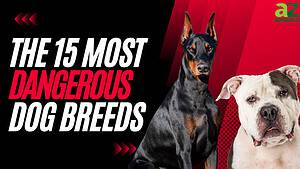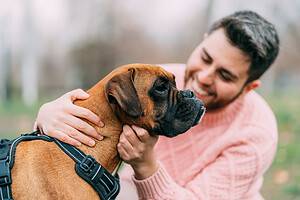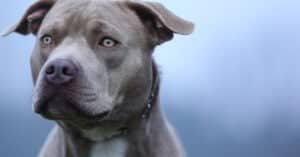Have you ever heard of a reverse brindle dog before? If not, you’ve probably seen them at least once or twice. These specific dog breed specimens have coats that are reverse brindled in color. Reverse brindle dogs generally have fawn brindling on a black backdrop or appear to be totally black from far away. The so-called reverse brindle is actually just very excessive brindling that causes this visual outcome. But how exactly does that work? Is it a genetic mutation, or something else?
In this article, we’ll break down exactly what a reverse brindle is, what brindles are in general, and everything else you need to know about this cool type of dog! They might be rare, but owning a reverse brindle dog could be an excellent decision.
Defining Brindling
Certain breeds of dogs have a pattern of color and ‘stripes’ in their fur called brindle. Boxers, bulldogs, and many other breeds of dogs can display a brindle or reverse brindle pattern. Boxers, in particular, are known for displaying brindling the most often. The brindle coloring is not, however, seen in certain breeds like Labrador Retrievers. Although reverse brindling is not regarded as an unusual pattern, it might provide you with a valuable indication of whether your dog is a purebred boxer or a mix.
Fawn and brindle are the two color options for boxers. Fawn comes in hues ranging from light tan to deep red or mahogany, with the darker hues being desired in show dogs. Boxer brindle fur has a fawn backdrop with black striping on top. The term “brindle” can refer to any brindle hue or pattern, although more specific labels have emerged to designate certain patterns and color combinations. It is possible to categorize brindle as mahogany, light, golden, red, fawn, dark, or seal.
Defining Reverse Brindling
A reverse brindle pattern flips the emphasis of the coloring in a way that light stripes appear to sit over a dark backdrop, in contrast to a standard brindle pattern where black stripes appear over a lighter-colored background. The coat seems darker even if the background fur is still light or fawn in color because of how conspicuous the black stripes are.
Dogs that seem black really have dark brindle fur, and the stripes should be apparent upon careful scrutiny. However, the coloring can even appear nearly solid, creating the appearance that the dog is a dark hue.
A dog’s genes dictate the brindle pattern in his fur. Either the brindle gene is expressed or not. Only fawn and brindle colorings are permitted in boxers, or a lack of coloration that results in white fur. There are no completely black boxers as this is a genetic impossibility. The skin pigmentation and nail color of dogs might differ depending on their brindle pattern.
These canines have highly specific ways of passing on and expressing the brindle coloring genes. In boxers, the fawn gene is recessive, but the brindle coat color gene is dominant. As a result, a puppy’s fur will display any brindle genes he may have. Only fawn-colored pups can be produced by fawn boxers because fawn coloration requires the presence of two recessive fawn genes. If a brindle boxer carries two brindle genes, only brindle-patterned puppies will be born. If a brindle boxer has both a dominant brindle gene and a recessive fawn gene, they can breed with another brindle boxer who also has a dominant brindle gene and a recessive fawn gene, or they can breed with another brindle boxer who has two fawn genes.
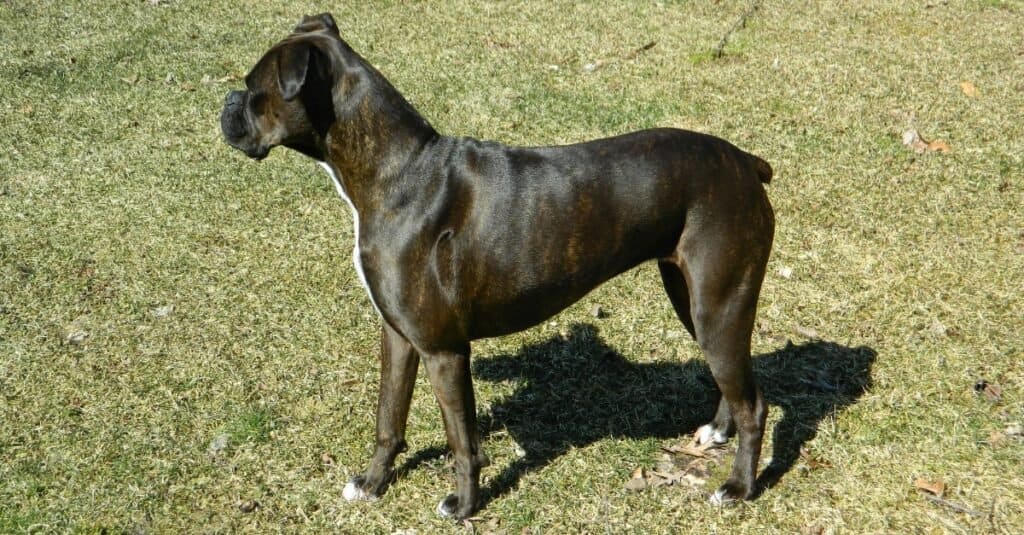
Reverse brindling on a boxer (pictured) may be difficult to identify without a keen eye.
©iStock.com/Richard Paoli
Defining Muddy Brindles
Dogs with muddy brindle fur have a variety of colors and patterning, including black, brown, tan, red, grey, and cream. Despite the fact that brindle coats are genetically less strong, many dog owners like this coloration due to its distinctiveness and attractiveness.
The unique muddy brindle coat is found in several dog breeds. Some breeds with muddy brindle coats include corgis, whippets, bulldogs, dachshunds, wolfhounds, deerhounds, greyhounds, and bulldogs. Some dogs have been bred to have certain color combinations. For instance, a reddish-muddy brindle coat is often desired in show bulldogs.
As we mentioned earlier, brindle fur is a recessive genetic characteristic, which means that for that feature to manifest, both of the individual parents’ genes must be recessive. Muddy brindles can have different base colors, stripe colors, and additional markings like face masks or solid-colored saddle patches.
Brindle Dogs vs. Reverse Brindle Dogs
We must have a good understanding of the distinction between brindle as well as reverse brindle coats in order to comprehend what a reverse brindle dog is. Although all brindle or reverse brindle coats use two colors in their design, the way the layers are visible varies. The more prevalent brindle coats may be identified by their black stripes over a light backdrop.
Because the design seems flipped, reverse brindle coats are sometimes known as inverted brindle coats. The black, thick striping on these coats makes the background appear lighter. In actuality, the fawn background is present in both the brindle as well as reverse brindle coats. The main distinction is that dogs with reverse brindle coats appear to have a black backdrop with lighter, fawn striping due to the significant concentration of dark striping in such coats.
Common Reverse Brindle Dog Breeds
Brindle or reverse brindle coats are only possible in several breeds. Let’s examine the causes of this and the breeds that fit this description.
Reverse Brindle Boxers
Reverse, light, dark, gold, fawn, red, mahogany, blue, and seal are some of the several varieties of brindle coloring in boxers. Boxers can also be entirely fawn or have no pigment, which makes them appear almost completely white.
There aren’t any purebred black boxers, despite the fact that some of them seem black. Such boxers are likely just seal brindles or reverse brindles with extremely extensive black striping. Dogs with reverse brindle and regular brindle coats can occasionally have white patches, which would make them muddy brindles, as mentioned earlier. These boxers are also referred to as flashes or flashy reverse brindle boxers.
For boxers, brindle is a prominent quality. When a dog has one brindle characteristic, regardless of whether they also have the other, they are likely to have a brindle coat. Puppies inherit one characteristic of coat color from each parent when they are born. The puppy will have a brindle coat if one or both of its parents carry the brindle gene. Breeders, however, are thus far unable to foretell whether a newborn puppy will have the rare reverse brindle coat.
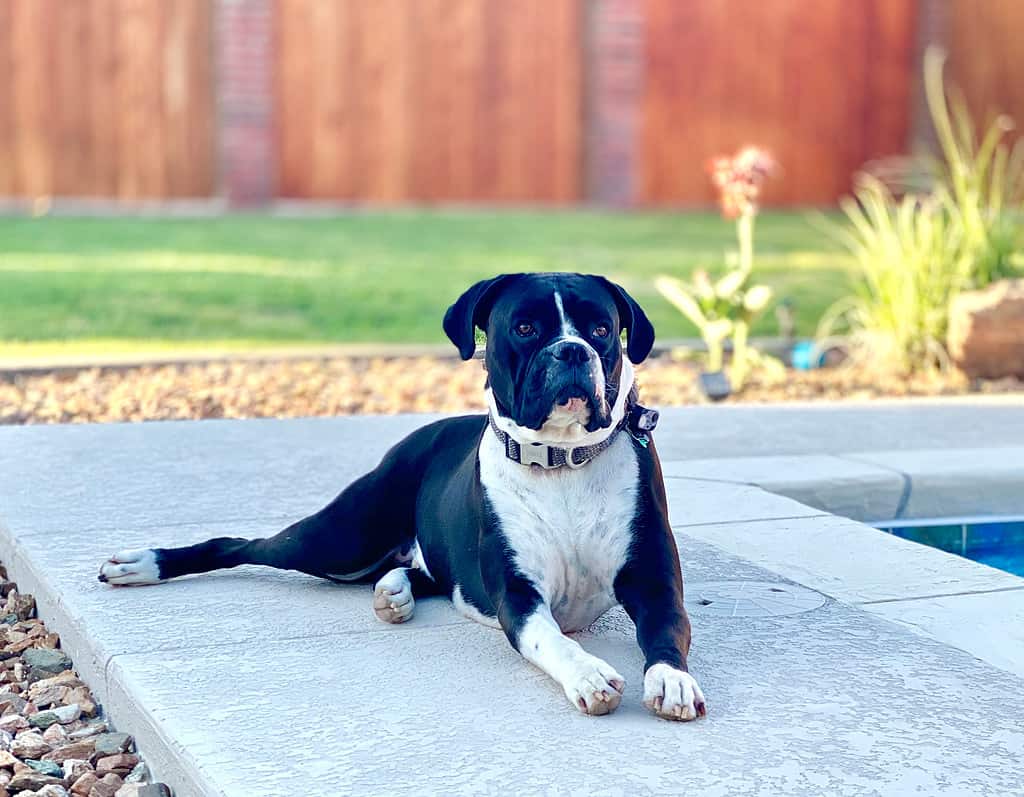
Reverse brindle dogs (pictured) may appear solid black from far away.
©Tuxster/Shutterstock.com
Reverse Brindle Mastiffs
Reverse-brindle and brindle Mastiffs have black coats with little fawn striations. They also usually have darker noses and eyes than other Mastiff colorations.
Brindle or reverse brindle coats are possible in any Mastiff breed, although African Boerboels and Bully Kutas are more likely to have them. Brindle Mastiffs are classified as purebred dogs under the American Kennel Club.
Breeding reverse brindle and standard brindle Mastiffs might be more challenging than it is for other types of breeds with similar coats. The brindle gene is recessive in Mastiffs, but not dominant in most other breeds. Given that the dominant gene for Mastiff coat color is black, a single black gene will outweigh a single brindle gene. However, the yellow gene that will often result in fawn or apricot-like hues is less common than the brindle gene.
Reverse Brindle Welsh Corgis
The Welsh corgi and the Cardigan corgi are the two known varieties of corgis. There aren’t many coat variations for the former, including brindle variations. However, Cardigan corgis have a variety of coats, including reverse brindle and regular brindle.
White markings can be seen on the majority of Cardigan corgis’ chests, necks, muzzles, stomachs, legs, tails, and occasionally even on their skulls. Bridle coloration is caused by a dominant gene in Cardigan corgis. However, these dogs rarely have brindle or reverse brindle coats, and breeding one is a rare occurrence.
Reverse Brindle French Bulldogs
Reverse brindle French bulldogs are rather uncommon. It’s already somewhat rare among all dog breeds except for boxers, but this coat is the rarest kind of brindle for French bulldogs. The foundation of a French bulldog’s coat is either cream or white, as opposed to the fawn background that you would see on a reverse brindle boxer. The underlying patterns remain opaque.
Reverse brindle French bulldogs are so uncommon that they can be quite pricey. The trait for standard brindle or reverse brindle coats in French bulldogs is dominant, just like it is in boxers. Therefore, only one gene needs to specify a brindle coat. Brindle coats rather than reverse brindle coats are more typical in French bulldogs.
Other Reverse Brindle Dog Breeds
Other breeds that are capable of having the reverse brindle coat include sheepdogs, shepherds, Great Danes, some terriers, and some hounds. Any breed that is capable of having a brindle coat is likewise capable of having a reverse brindle coat. In general, short-haired breeds are more likely than long-haired breeds to produce brindle and reverse brindle puppies. However, brindle-coated long-haired dogs are occasionally seen. One famous breed that cannot have the standard brindle or reverse brindle coat is the Labrador Retriever.
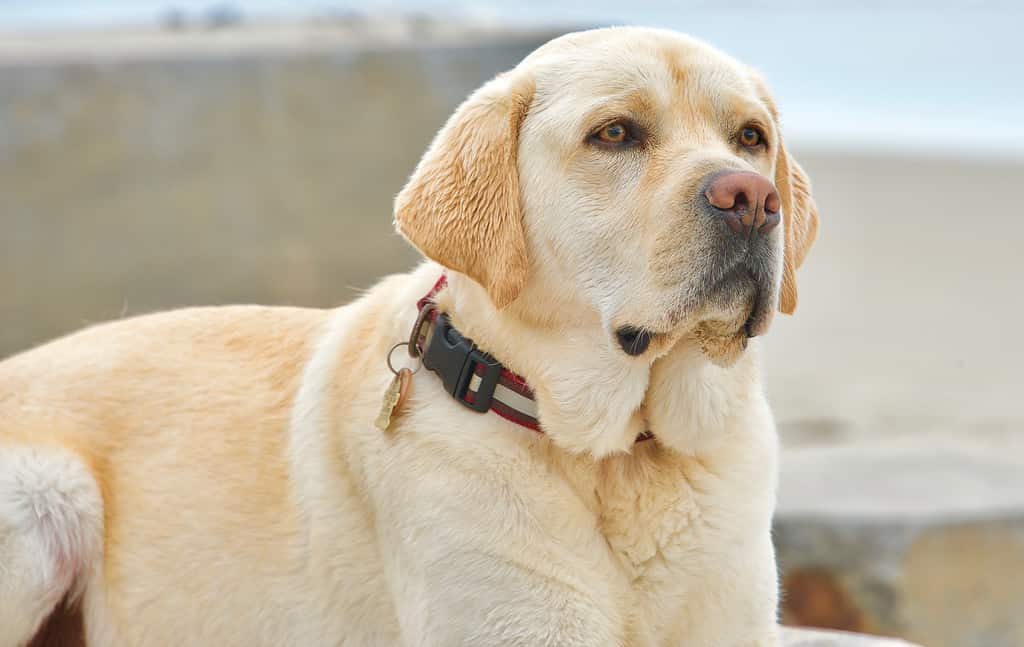
Labrador Retrievers (pictured) are one breed of dog that cannot have brindle patterns.
©Judal/Shutterstock.com
Is a Reverse Brindle Dog Right for You?
If you enjoy the color pattern, then why not? Reverse brindle dogs are absolutely beautiful and rare, though they aren’t impossible to find. This pattern is a variant of a brindle coat in which the streaking and striping are so densely packed that it is exceedingly challenging to detect the background color. This produces a very aesthetically-pleasing coat. If you care about aesthetics, a reverse-brindle dog could very well be right for you.
Be mindful and have a keen eye when searching for this type of dog at a breeder or a shelter. Most of the time, these dogs seem black from far away and, sometimes, up close. You could see elements of fawn or white in the dog’s coat under the ideal lighting.
Although it might be difficult to find these canines, several dog breeds can have the standard brindle or reverse brindle coat. Breeds like boxers are more likely to have brindle coats than breeds like French Bulldogs who are less likely to have them. There are even more brindle coat varieties that are available out there, including seal brindle, mahogany brindle, blue brindle, and more. Genetics determines the sort of brindle an individual dog will have. Depending on the breed, the brindle gene may be dominant or recessive.
How cool are reverse brindle dogs? They might be hard to find, but we believe with a sharp eye and some dedication, you’ll be able to find this rare beauty and make them the newest addition to your family!
The photo featured at the top of this post is © iStock.com/Richard Paoli
Ready to discover the top 10 cutest dog breeds in the entire world?
How about the fastest dogs, the largest dogs and those that are -- quite frankly -- just the kindest dogs on the planet? Each day, AZ Animals sends out lists just like this to our thousands of email subscribers. And the best part? It's FREE. Join today by entering your email below.
Thank you for reading! Have some feedback for us? Contact the AZ Animals editorial team.



